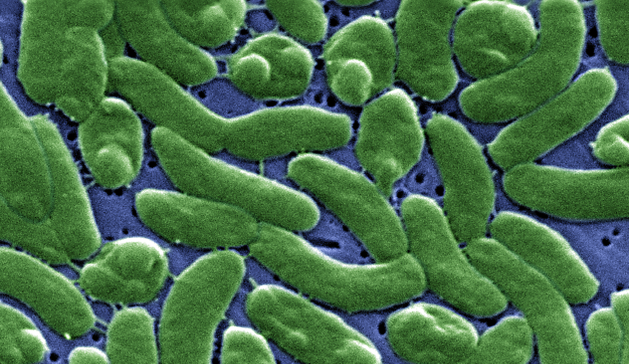A startling scientific study recently published in the journal Water Research has revealed a new menace for vacationers. Just as concerns over COVID-related travel have begun to fade into a distant memory, NBC News reported on the study’s findings, which confirmed that a specific strain of flesh-eating bacteria has the ability to thrive on floating islands of seaweed and plastic debris frequently found littering beaches.
The study focused on analyzing the genetic makeup of several Vibrio bacterial species found colonizing the countless pieces of plastic waste entangled within vast fields of floating seaweed, which persistently drift on the ocean’s surface before making landfall.
The Vibrio genus, well-suited to saltwater environments, encompasses over 100 species, with roughly a dozen known to cause illnesses in humans. Vibrio vulnificus, an especially dangerous flesh-eating variant, poses a life-threatening risk.
The discovery that plastic marine debris supports the complete range of pathogenic genes, coupled with the presence of new Vibrio strains in the samples, has raised significant concerns about public health. Marine biologist Rachel Diner, in an interview with NBC, warned that cases of flesh-eating infections are likely to surge in the coming years due to the influence of climate change.
“Vibrios like warm water conditions, so infections by Vibrios have been increasing over the past few decades and also the Vibrio concentrations themselves,” Rachel said. “It’s pretty reasonable to expect that you’re going to see more infections in the future and more of these pathogenic species.”
Yet, should beachgoers planning to visit the U.S. East Coast, the Gulf of Mexico, and the Caribbean be worried? Experts suggest that there is no need to panic. While it is advisable to avoid contact with sargassum mats if one has open wounds and to wash hands after handling any seaweed or debris, the overall risk remains low.
Linda Amaral-Zettler, a marine microbiologist and one of the study’s authors, emphasized that people need not fear sargassum as a mortal threat. However, it is essential to responsibly consider the potential risks associated with these findings.
The situation may evolve over the coming decades as the compounding effects of climate change worsen, resulting in warmer sea surface temperatures. This, in turn, could enable flesh-eating Vibrio species to proliferate in regions farther north than previously observed.
Additionally, the Great Atlantic Sargassum Belt, spanning a staggering 5,000 miles from Africa’s west coast to the Gulf of Mexico, has experienced a tremendous growth spurt over the past decade. The sheer volume of this troublesome brown macroalgae inundating tropical shores has become unmanageable, causing distressing consequences for tourism. The unsightly masses of sargassum not only clog beaches but also harm marine life and emit noxious hydrogen sulfide gas, reminiscent of rotten eggs, as they decay on the sand.
While vigilance is warranted, there is no cause for alarm. By understanding and respecting the potential risks, beachgoers can still enjoy their time in the sun safely, taking reasonable precautions to protect their well-being while appreciating the coastal beauty.

















More Stories
Ryanair Cancels 170 Flights Amid French Air Traffic Controllers’ Strike, Stranding Over 30,000 Passengers
Hawaii’s Tourism Industry to Hit $49 Billion by 2035—Sustainability and Global Demand Drive Growth
Brussels Airport Set for Record Summer: Over 5.1 Million Passengers Expected, Up 5%